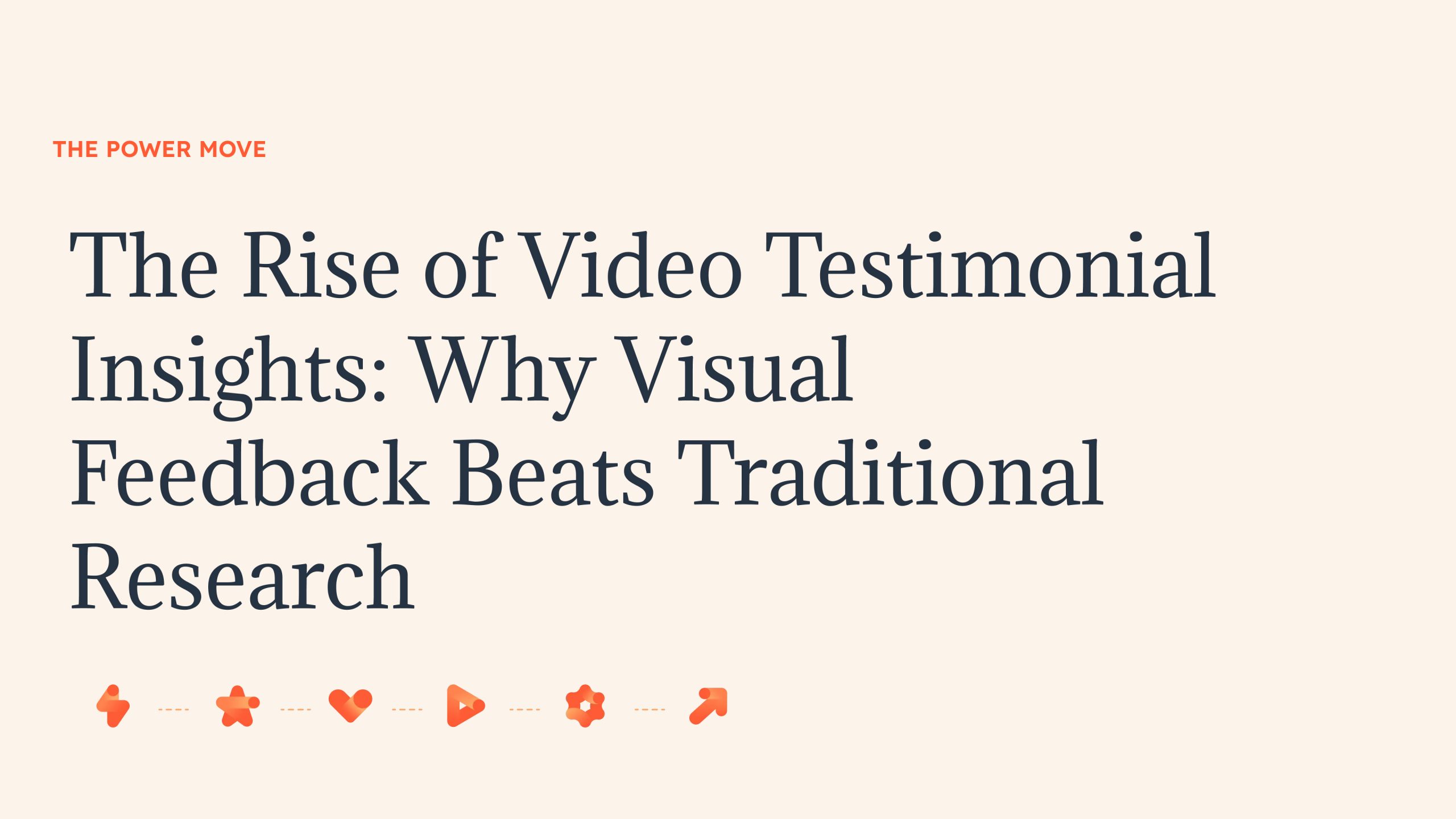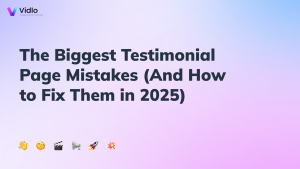Consumer behavior has become more expressive, visual, and emotionally driven than ever. People don’t just share opinions—they share reactions, stories, and real-time experiences through video. Because of this, brands are rethinking how they collect and interpret customer insights. Traditional surveys capture what customers say, but they often miss what customers feel.
This shift has pushed organizations to look beyond text-based feedback and toward richer, more human forms of insight collection. Video testimonials bring nuance, tone, and context into focus—layers that reveal motivations and hesitations impossible to capture through checkboxes or typed responses. With this level of clarity, teams make decisions with confidence instead of assumptions.
Video isn’t replacing research—it’s elevating it. And for brands that want emotional accuracy and faster access to meaningful feedback, visual insights have become the new standard. Tools like Vidlo, a modern video testimonial collection software, make this shift even more accessible by enabling teams to gather authentic customer reactions effortlessly through link-based or QR-based video capture. With richer emotional signals and faster analysis, video-powered insights help brands make decisions grounded in what customers truly feel—not just what they type.
Why Video Testimonial Insights Are Rising in Modern Market Research
Video consumption has reshaped not only how people communicate, but also how brands capture feedback. Today, 89% of businesses use video as a marketing tool—a slight dip from previous years, yet still a clear indication that video remains the dominant medium for expressing ideas, emotions, and experiences. Consumers increasingly prefer to share reactions through visuals rather than text, revealing authentic tone, context, and real human sentiment. As a result, organizations are moving beyond traditional surveys and leaning into video testimonials to uncover deeper, more emotionally accurate insights. In modern market research, video isn’t just an enhancement—it’s becoming the new standard for understanding what customers truly feel.
As customer expectations evolve, so does the way brands gather and analyze insights. Brands are moving beyond generic surveys because they need feedback that captures tone, emotion, and context—the elements that shape real buying behavior. Video testimonials give researchers genuine human signals that text responses simply can’t provide.
The Limitations of Traditional Research Methods
Slow turnaround
Lack of emotional depth
Low authenticity
Over-reliance on self-reported (and often biased) data
The Advantages of Visual Feedback (Video vs Text Insights)
Real facial expressions & tone reveal true sentiment
Higher accuracy in understanding emotional responses
More actionable insights based on behavior, not assumptions
Faster decision-making, especially when synced with AI analysis
How Video Testimonials Improve Insight Accuracy and Speed
Video testimonials help teams get to the truth faster. Instead of waiting for survey reports or combing through written statements, researchers can watch genuine reactions within minutes. The blend of speed, clarity, and emotional depth allows companies to validate ideas sooner and course-correct with confidence.
Real-time reactions
Unfiltered and authentic answers
Micro-expressions reveal hidden truths
Faster synthesis of insights, especially with AI tagging and transcription
Practical Use Cases: When Video Feedback Beats Traditional Research
Video becomes especially powerful when understanding customer emotion matters. Brands use video feedback during moments when nuance, context, and authenticity are essential to shaping decisions.
Popular video-first use cases include:
Testing new ad creative or UGC
Validating social trends before making strategic bets
Understanding first impressions of a new product
Exploring customer pain points in their own words
Evaluating prototypes or UX flows for usability barriers
How Brands Turn Video Testimonials Into Actionable Insights
Thematic tagging to organize insights visually
Emotion recognition to detect confidence, uncertainty, or delight
Highlight reels that teams can share internally
Faster alignment across departments, using real customer voices as the foundation
The Future of Consumer Insights: Video-First Decision Making
Video-first research is becoming the default, not the exception. AI and visual intelligence tools make it possible to analyze emotional content at scale—something that was impossible just a few years ago. Today, companies can pair qualitative richness with quantitative accuracy to unlock deeper insights.
AI-assisted sentiment analysis detects tone and emotional signals
Faster cross-team collaboration through shared video clips and summaries
More natural feedback formats, mirroring how customers already communicate
Better predictive accuracy, as emotional patterns often foreshadow market shifts
FAQ
1. What makes video testimonial insights more reliable than traditional surveys?
Video testimonials provide emotional context, allowing brands to understand how customers feel rather than relying solely on what they write. Tone, facial expressions, pacing, and micro-reactions reveal sincerity, hesitation, or excitement—elements impossible to capture through text alone. This reduces the guesswork associated with interpreting survey data. As a result, the insights are more honest, more complete, and more reliable.
2. How do brands analyze video feedback efficiently?
Most companies use AI-driven tools that transcribe, tag, and categorize video content automatically. These systems highlight key phrases, detect sentiment, and group similar themes, which significantly speeds up analysis. Teams can also create highlight reels to share insights without requiring everyone to watch full videos. This workflow allows for faster synthesis and alignment across marketing, product, and research teams.
3. When should companies use video-based research instead of forms or surveys?
Video-based research is ideal when emotion, nuance, or authenticity matters. This includes testing messaging, evaluating product experiences, assessing prototype usability, or validating cultural and social trends. Surveys still serve a purpose for gathering quantitative data, but video is preferred when teams need depth, clarity, and real context behind customer decisions.
4. Can video feedback be scaled for large research projects?
Yes—video feedback can now be scaled effortlessly thanks to link-based and QR-based capture tools. Participants can record from any device without downloading an app, allowing companies to collect hundreds or thousands of videos quickly. AI automation organizes the content, making large-scale analysis streamlined and manageable. This makes video-based research realistic even for enterprise-level studies.
5. Is visual feedback useful for understanding emotional reactions?
Absolutely. Visual feedback provides emotional cues that are invisible in text responses. Facial expressions, voice tone, body language, and pacing reveal sincerity, confusion, or excitement in real time. These emotional signals help researchers understand user reactions at a deeper level, leading to more accurate insights and more empathetic decision-making.




